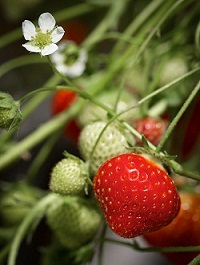Turmeric is a superfood and it has myriads of health benefits but do you know it can be used in your garden, too. Read on to learn about these turmeric uses!
Turmeric is one of the must used ingredients in South Asian cuisines, used to color the curries: For the exotic taste and mild flavor. It has many medicinal properties and used popularly in alternative medicines. This super food is packed with antioxidants and antiseptic properties and also has compounds that help fight cancer, promote brain health, and improve digestion and even more. But did you ever thought that TURMERIC can be useful in the garden? See these turmeric uses to find out!
1. Pesticide
Turmeric is a super food for us but ants and other pests abhor it to the core and avoid totter around it. To repel pests, especially the ants– simply sprinkle turmeric powder around the base of the plant and on leaves or anywhere near the ant traces. Must remember, when using organic products, persistency is the key.
Turmeric is a super food for us but ants and other pests abhor it to the core and avoid totter around it. To repel pests, especially the ants– simply sprinkle turmeric powder around the base of the plant and on leaves or anywhere near the ant traces. Must remember, when using organic products, persistency is the key.
2. Heal wounds
If you ever got hurt and it’s bleeding you can place a thick paste made of turmeric powder and water over there. Same for plants, got a wound on a tree or shrub due to pruning, use turmeric. Either apply a thick paste or sprinkle turmeric powder on the wound for a natural and safe healing. The turmeric powder will prevent any bacterial or fungicidal disease. It also helps accelerate the plant’s natural healing process.
If you ever got hurt and it’s bleeding you can place a thick paste made of turmeric powder and water over there. Same for plants, got a wound on a tree or shrub due to pruning, use turmeric. Either apply a thick paste or sprinkle turmeric powder on the wound for a natural and safe healing. The turmeric powder will prevent any bacterial or fungicidal disease. It also helps accelerate the plant’s natural healing process.
3. Get rid of Powdery Mildew
If your plants are suffering from powdery mildew, turmeric will help them. Mix one part turmeric and two part wood ash. Sprinkle this powder on infected plants on a non-windy day. It is recommended to sprinkle this early in the morning because the dew on the leaves will adhere the powder.
If your plants are suffering from powdery mildew, turmeric will help them. Mix one part turmeric and two part wood ash. Sprinkle this powder on infected plants on a non-windy day. It is recommended to sprinkle this early in the morning because the dew on the leaves will adhere the powder.


















































